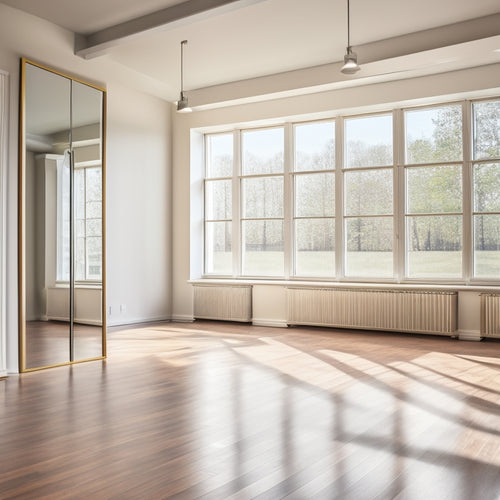
Dance Education: Unveiling Bias Resilience Secrets
Share
In dance education, uncovering hidden biases is essential, as they can operate beneath conscious awareness and perpetuate systemic inequalities, making it vital to develop bias resilience strategies to foster inclusive and anti-racist environments. Uncovering hidden biases is pivotal, as they can operate beneath conscious awareness and perpetuate racism, othering, and abuse. Building resilience in dance education involves recognizing bias, acknowledging privilege, and fostering inclusive language and open dialogue. By embracing diverse perspectives and empowering inclusive spaces, educators can create safer and welcoming environments. As we explore the complexities of bias resilience, we will uncover the strategies necessary to transform dance education, one step at a time.
Key Takeaways
• Recognize and acknowledge personal biases to create a safe and inclusive dance environment.
• Developing bias resilience in dance education fosters anti-racist and welcoming spaces.
• Identify and address microaggressions that perpetuate biases and racism in dance classes.
• Foster empathy and respect by promoting diversity and actively addressing biases.
• Intentional facilitation and design are crucial in creating inclusive dance spaces that value diverse identities and experiences.
Uncovering Hidden Biases
Cognitive biases, often operating beneath the surface of conscious awareness, can exert a profound influence on our perceptions, attitudes, and behaviors in the dance education setting.
As we explore biases, it is essential to recognize that they can perpetuate racism, othering, and abuse. Confronting stereotypes is a vital step in creating inclusive dance spaces.
By acknowledging and understanding these biases, we can begin to develop bias resilience, a critical aspect of fostering anti-racist and anti-othering environments. Through this process, we can create safer and more welcoming dance spaces.
Building Resilience in Dance
How can dance educators develop the skills and strategies necessary to recognize and overcome their own biases, thereby cultivating a resilient and inclusive dance education environment?
| Bias Recognition | Overcoming Challenges | Empowerment Strategies |
|---|---|---|
| Identify blind spots | Acknowledge privilege | Community support networks |
| Recognize microaggressions | Develop self-reflection | Empathy-based communication |
| Address implicit bias | Foster inclusive language | Safe space creation |
| Embrace diverse perspectives | Encourage open dialogue | Conflict resolution techniques |
Empowering Inclusive Spaces
Establishing inclusive dance spaces requires intentional design and facilitation. Educators must create an environment that acknowledges and values the diverse identities, experiences, and perspectives of all participants. This involves uncovering microaggressions, which can perpetuate biases and create an unwelcoming atmosphere.
By promoting diversity and actively addressing biases, educators can create a safe space for all participants to thrive. Empowering inclusive spaces requires a commitment to understanding and addressing the needs of diverse groups. Educators must actively work to dismantle systems of oppression and foster a culture of empathy and respect.
Frequently Asked Questions
Can I Register for the Course Even if I'm Not a Dance Educator?
Did you know that 75% of people hold unconscious biases? Anyone can register for the course, as it's designed for personal growth and career development, promoting inclusive practices and bias resilience in various industries, not limited to dance education.
Are There Any Prerequisites for Taking the Bias Resilience Mini-Course?
"There are no prerequisites for taking the bias resilience mini-course, as it is designed to be accessible to all; prior knowledge of dance education or specific course requirements are not necessary, ensuring inclusivity and safety for participants."
How Long Will I Have Access to the Course Materials After Registration?
Upon registration, participants gain lifetime access to the bias resilience mini-course materials, allowing for flexible scheduling and self-paced learning, ensuring that learners can revisit and reinforce their understanding of bias resilience at their convenience.
Will I Receive a Certificate Upon Completing the Bias Resilience Course?
Upon completing the bias resilience course, participants receive a digital certificate, showcasing their commitment to creating inclusive dance spaces. Certification benefits include digital badging, enhancing professional credibility and demonstrating expertise in bias resilience.
Is the Course Suitable for Dancers With Little to No Experience With Bias Resilience?
This course is designed for individuals with little to no experience in bias resilience, embracing a beginner's mindset. The learning curve is gentle, focusing on foundational skills for personal growth, ensuring a safe and supportive environment for all participants.
Related Posts
-

Why Lyrical Dancers Need Pro Makeup Guidance Online
As a lyrical dancer, you know that a polished, performance-ready look is essential to showcasing your skills and conv...
-

Tips and Tricks for Collapsible Ballet Bar Installation
To install your collapsible ballet bar, start by gathering essential tools like a drill, level, and measuring tape. M...
-

Innovative Therapy: Dance Movement's Healing Power
Dance movement therapy is a creative and evidence-based approach that harnesses the transformative power of movement ...


